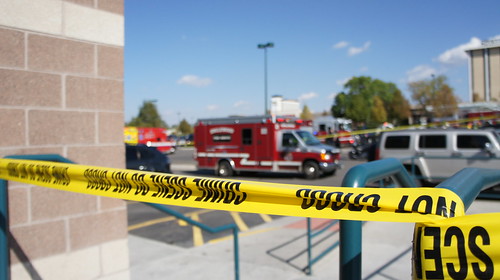Accident investigations are a critical part of the accident and injury prevention process. If an accident occurs, even if the individuals involved are unharmed, it is important to record the events of the accident. The goal of an accident investigation is not to assign blame, but to satisfy legal requirements, identify opportunities for improvement, and preserve evidence and witness.
Near Misses vs. Accidents
Distinguishing between a near miss and an accident is beneficial when conducting an investigation and filling out an incident report. A near miss is a situation that could have resulted in an injury under slightly different circumstances. Near misses should be viewed as an opportunity to identify room for improvement, and should be investigated with the same level of scrutiny as an acutal accident.
Accidents, unlike near misses, actually result in personal injury or property damage. Accidents can often be attributed to a variety of causes, and the ability to identify each element of an accident will help in both conducting a thorough investigation, and preventing it from recurring. The follow questions can help in identifying all potential causes:
- Activity: What was the person doing when the accident occurred?
- Equipment: Was any equipment used during the accident, and, if so, was it used properly or did it malfunction in some way?
- Environment: Where did the accident occur? Was there poor lighting, inadequate maintenance, weather-related hazards, or any other environmental hazard?
- Personnel: Was the individual appropriately trained for the task they were doing? Were they physically able to perform the activity? What role did the person have in the accident?
- Management: Were rules, protocols, and procedures understood by everyone involved in the accident? Were these policies and procedures being enforced?
Investigation Techniques
 There are several parts of the accident investigation process. Creating a system of policy and procedures will help ensure all investigations are done on time and without mistakes. Some of the most important steps in investigating an accident are:
There are several parts of the accident investigation process. Creating a system of policy and procedures will help ensure all investigations are done on time and without mistakes. Some of the most important steps in investigating an accident are:
- Safety: Before an investigation can begin make sure the person involved in the incident is not injured, and, if they are, perform necessary first aid and contact emergency response personnel if necessary. Also, make sure the area where the accident occurred is secured and there is no danger of anyone else getting hurt.
- Quick Response: Perform investigations as soon as possible so accurate facts and witnesses can be obtained.
- Witnesses: After an accident, it is recommended to obtain all relevant contact information from anyone present during the accident and to record their accounts of what happened.
- Photos: Record the scene with photographs. Ideally photographs will have date and time printed on them. This will allow statements made by witnesses to be better corroborated and to identify the cause of injury.
- Accident Report Forms: Fill accident report forms out immediately. Ensure all information is factual and not merely speculation.
- Evidence: Any evidence pertaining to the accident should be collected and safeguarded. This is important to make sure whatever caused the incident will not do it again.
Source: West Bend
